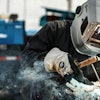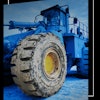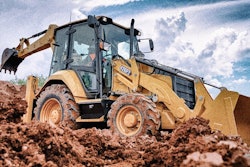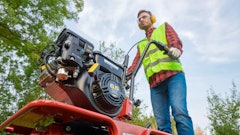
In many parts of the country, construction season is winding down. Maybe that means some of your equipment is about to get a little well-deserved time off. Or perhaps you’re getting ready to put part of your fleet into storage. Either way, prepping your machines properly for their downtime now will save you some downtime come spring.
Your best bet is to start with each machine’s Operation & Maintenance Manual, which includes model-specific storage instructions. You may also find this quick winter storage checklist handy:
o Clean the entire machine. That includes the engine compartment, the undercarriage on tracked machines and the inside of the cab. Remove all dirt, grease and debris.
o Lubricate any moving parts, including hinges. Doing so reduces friction and protects them from damaging cold temperatures. Use a high-viscosity lubricant — it won’t drip off your equipment in the cold, and it coats parts better than low-viscosity grease.
o Top off fuel and fluids. That helps prevent condensation in the tanks, which can lead to start-up issues next season. You may also want to think about adding a fuel stabilizer.
o Check fluids and filters. If you’re getting close to your next preventative maintenance (PM) interval, replace them before storing the machine. Otherwise, maintain your normal PM schedule during storage.
o Check tire pressure. You may want to slightly overinflate the tires to avoid flattening over time.
o Disconnect the battery. Store it in a cool, dry place where the temperature stays above 32°F (0°C).
o Remove and inspect any attachments. Store them in a separate place at room temperature. That protects hoses and connections from cold temperatures and makes them easier to attach when they’re needed again.
o Perform a thorough walkaround. Check the machine for damage and wear. (The Cat® Inspect app makes this easy.) Pay special attention to hydraulic hoses and fittings, which are more susceptible to cracking and failure in cold conditions. Repair or replace what you can now or make a note to do it at the beginning of next season.
o Protect the machine from the elements. Store it indoors if possible or in a dry, protected location where it’s not exposed to direct sunlight and wind. Consider using protective covers like cribbing and crane mats to keep out the dirt and moisture that can cause rust. Even a tarp covering the machine adds protection from the elements.
o Tag the machine to indicate it’s in storage condition. That helps keep people from putting it into service before it’s prepped for a working environment.
Once the machine’s in storage, don’t simply walk away. Be sure to keep performing PM to prevent damage and ensure it’s ready to work at a moment’s notice if needed. It’s also a good idea to start and “exercise” the machine regularly to keep the engine and all other components lubricated.
What about those machines you’re not putting into storage? They still need special care for winter weather. Follow this “Working in Winter” checklist for the best results.




















